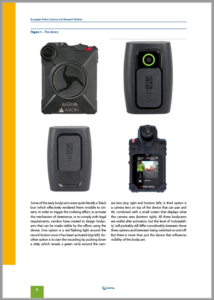Police forces in countries all over the world are using body cameras or considering the introduction of these small wearable devices. Most impact assessments are based on one geographical area or one jurisdiction. Yet, the results are sometimes used as an answer to the general question: ‘Do bodycams work: yes or no?’ As if local conditions or the specifics of the bodycams are not important. In this article, published in the European Law Enforcement Research Bulletin, I propose a different approach.
In the first part of this article, I present a meta-analysis aggregating nine impact assessments from three different countries. The average results are positive prompting the conclusion that bodycams work. However, the overwhelming majority of research on bodycams comes from the United States or the United Kingdom. As police forces in other countries try to copy projects from abroad, they quickly discover that bodycams are about much more than just acquiring the devices. Any bodycam program needs careful preparation and attention to implementation to enable the devices to work as intended.
By looking at effectiveness from this perspective, a different question appears from underneath the average results: ‘How do bodycams work, under what conditions and for whom?’

In the second part of the article, I sketch a framework to help science and practice to answer this much more relevant and realistic question. Central tenets within this framework are mechanisms, context and implementation. The final part of the article focuses on two topics that are often overlooked, but might prove essential in the quest for transferable lessons on bodycams: the visibility of the bodycam and the guidelines regulating the use of the bodycams.
Keywords: bodycams, police, evaluation, meta-analysis, implementation.
